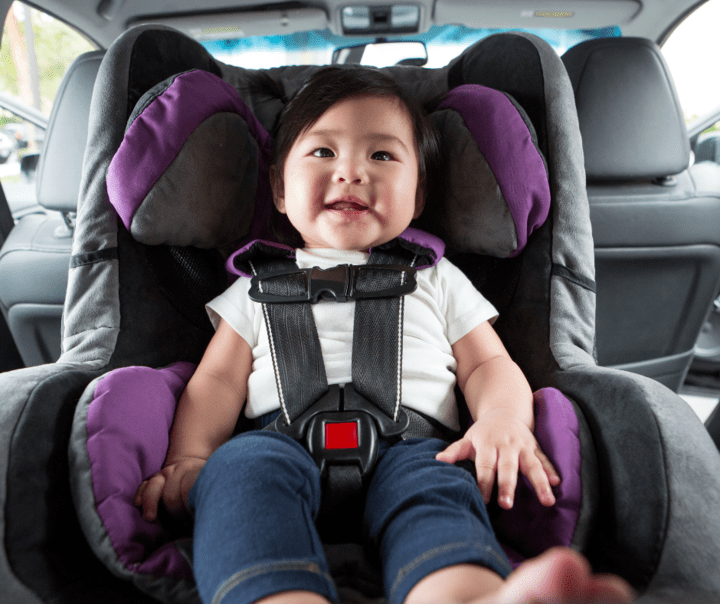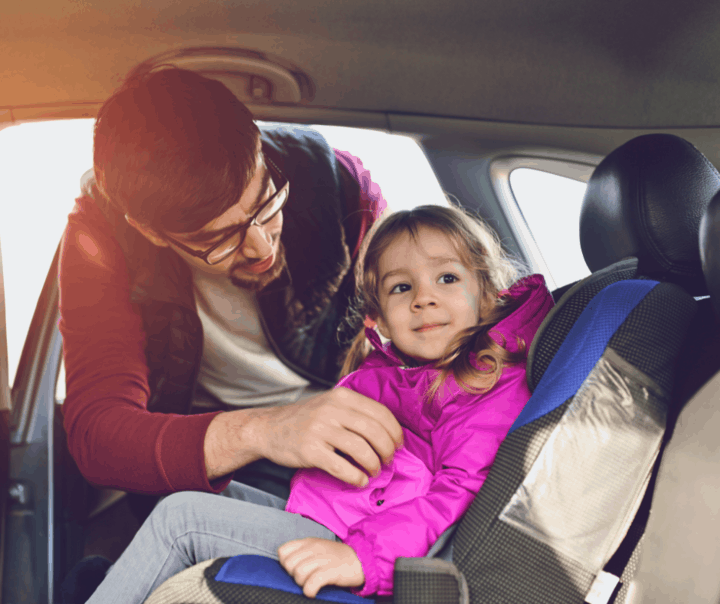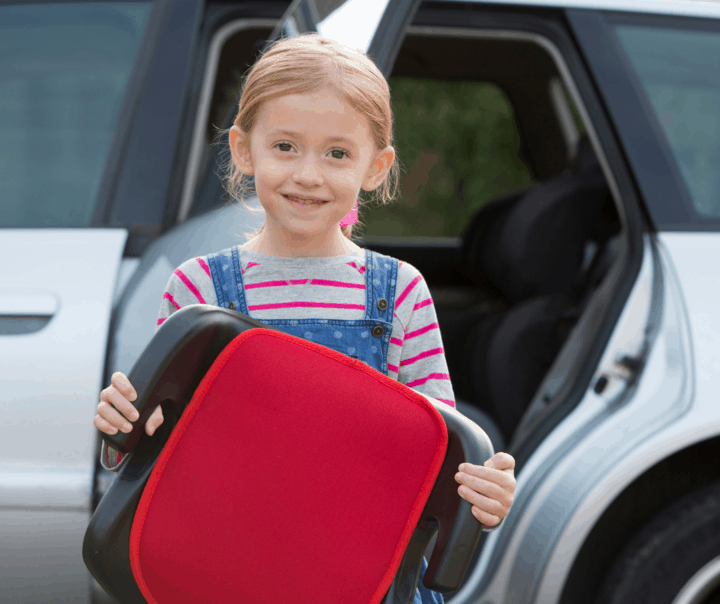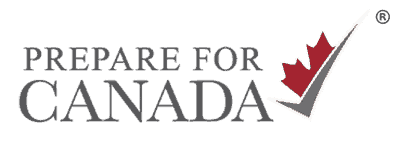
Babies and children need special protection while travelling in a car. Child car safety seats are there to help keep your child safe on the road. They prevent multiple injuries among children during road crashes and sudden stops. This is why they are mandatory in Canada.
Note: The numbers provided in this article could be different depending on your province as each province has its own laws. I will provide the numbers that are found most commonly throughout Canada.
Child Car Safety Seats in Canada
Children that are required to have a child car safety seat, must sit in their safety seat at all times when in a car. The rules for child car safety seats apply to any child in Canada that meets the age, weight, and height criteria.
This restriction includes newcomers as well. A newcomer is required to have a child car safety seat even as they arrive from the airport. If you have a child that should have a car safety seat, then it would be wise to prepare to have one before you arrive in Canada.
4 Types of Child Car Safety Seats
Advertisement:
There are four child car safety seat categories. Which one your child should have, depends on their age and height. These four categories, in order from youngest to oldest, are:
- Rear-facing car seats
- Forward-facing car seats
- Booster Seats
- Seat belts (for children)
Most of Canada uses these four categories. But because provincial governments make their own laws, Alberta, Nunavut, and the North West Territories do not have booster seat laws. Still, booster seats are recommended.
1. Rear-Facing Car Seats
Rear-facing car seats, as you may have guessed, face the back of the car. The children sitting in them will be facing the back of the car instead of facing forward. This type of car seat is for infants and toddlers. They are effective in preventing injuries that could have been caused without one.
There are 3 types of rear-facing car seats you can buy:
- A regular rear-facing seat
- A convertible car seat (that can later be converted to a front-facing seat)
- An all-in-one seat (that can later be converted to both forward-facing and booster seat)
Naturally, the last 2 are more expensive than a regular front-facing seat. However, they are a good investment because you won’t have to buy another car seat in the future when your child outgrows their rear-facing seat.
Advertisement:

Requirements for Rear-Facing Car Seats
Rear-facing car seats are mandatory for babies that are under 9 kg (20 lbs) or one year old. As mentioned earlier, these numbers will differ from province to province.
After your toddler has passed their mark, either by age or weight, you can choose if you want to:
- keep the rear-facing seat, or
- upgrade to a forward-facing seat.
It is recommended that you keep a rear-facing seat for your toddler because a rear-facing seat is a lot safer. Many parents chose to keep rear-facing car seats until their child reaches the age of two.
2. Forward-Facing Child Car Seats
Once your child exceeds the weight limit of their rear-facing car seat, or you decide it’s time to upgrade, your child gets a forward-facing car seat. A forward-facing car seat is not as safe as a rear-facing car seat but, unlike a rear-facing seat, it can hold bigger children.
There is more legroom in a forward-facing car seat and it usually has a higher weight limit. You can buy a regular forward-facing car seat, a convertible, or an all-in-one seat.

Requirements for Forward-Facing Car Seats
A child must sit in a forward-facing child seat until they are at least 18 kg (40 lbs). After that, you can choose whether or not you want to get your child a booster seat. Even though forward-facing seats are not safer than rear-facing, they are safer than booster seats. This is why you should keep your child’s forward-facing seat for as long as you can before they exceed the seat’s weight limit.
3. Booster Seats
A booster seat is the third and final car seat your child will sit in. Booster seats raise children to a level where a seat belt will fit them. It also provides head and neck protection during a crash. Booster seats are estimated to be about four times safer than a normal seatbelt during a crash.

Booster Seat Requirements
A child is required to be in a booster seat until they:
- Reach age eight
- Are taller than 4’9”, or
- Weigh more than 36 kg
Once they reach one of those benchmarks, they are legally allowed to use a regular seat belt. Of course, you should check the exact numbers for your province as these numbers differ from province to province.
A good way to check if your child is ready for a regular seat belt is to see if their legs drop comfortably over the seat’s edge while their back lines up with the back of the seat. If this is the case, and your child has passed your province’s regulations, your child can use a normal seatbelt.
4. Seat Belts
After a child has outgrown their booster seat, they can use a regular seatbelt. However, there are some restrictions. A child under the age of 14, that uses a regular seat belt, must sit in the back seat of a car. Only people aged 14 and above are allowed to sit in the front passenger seat.
Before a child starts using a regular seat belt, it is the parent’s job to ensure that the seat belt fits them properly. To ensure a seat belt fits your child, make sure that the lower strap goes around the hips and not the stomach. The shoulder strap (the one going diagonally) should nicely rest on the shoulders and not touch the neck. If this is not the case, your child should stay in a booster seat.
If your child has outgrown their booster seat but isn’t ready for a regular seat belt, then it is recommended that they get a bigger booster seat. Most likely, however, booster seats are designed so that your child will be ready for a regular seatbelt right after they have outgrown their booster seat.
Installing Car Seats
Installing car seats properly is just as important as installing car seats in the first place. Properly installed car seats can mean the difference between life and death during a car crash. I will go briefly over how to install each of the three types of car seats in this section.
Keep in mind that there are many instructional videos on how to install car seats online. The Ontario Ministry of Transportation has great resources to help you install your child’s car seat. To access the full guide on how to install a car seat, click here.
Note: Never install a child car safety seat near an active airbag. If there is an airbag where you want to install the seat, have the airbag disabled. Airbags can harm children if they inflate during a crash.
How to Install a Rear-Facing Car Seat
Rear-facing car seats are installed at an angle to allow your child to lie down. Rear-facing car seats will have a sticker at the side indicating the angle at which the seat should be. Most seats have angle adjusters to achieve the correct angle. If yours doesn’t have an angle adjuster, you can use rolled-up towels or some kind of prop to hold the seat at an angle.
Once you have figured out how to get the seat to the correct angle, you can fasten the child’s safety seat to the car. To do this, you will have to use either a seat belt or the Universal Anchorage System (UAS). All new cars in Canada have a UAS. Cars older than 2002 may not have one.
To learn how to install a rear-facing car seat properly, check out this guide from the government of Canada. It covers both UAS and seatbelt installation methods
How to Install a Forward-Facing Car Seat
Installing a forward-facing car seat is pretty similar to installing a rear-facing car seat. To fasten a forward-facing seat to the car, you can use both the UAS and a seatbelt. Unlike the rear-facing seat, however, a forward-facing seat does not rest at an angle; it must be fastened upright.
Another thing to keep in mind is that there should be no twists in any of the straps. If a twist appears in one of the straps, make sure you undo that step to keep the strap straight.
To learn how to install a forward-facing car seat properly, check out this guide from the government of Canada. It provides step-by-step instructions to use both UAS and seat belt installation methods.
Installing a Booster Seat in Your Car
The installation method for a booster seat is pretty straightforward. The booster seat rests on top of the car’s seat, fastened by an anchor strap to the car’s UAS. Its purpose is to make sure that the car’s seat belt can fit the child by boosting them up to a higher level. A booster seat makes sure that the lower strap of the seat belt goes across the hips of the child and the diagonal strap rests nicely on the shoulder.
Here is a government of Canada guide on how to install a booster seat and use it properly.

Related Posts:
Common Mistakes When Installing a Child Car Seat
There are some things you check in a car seat, especially if you bought it used:
- Make sure it hasn’t passed its expiry date, which will be indicated somewhere on the seat.
- Check to see if there are any cracks. Any cracks can lead to the car seat getting damaged during an accident. This is dangerous for the child sitting in that car seat.
- Make sure that the seat is fastened at the right angle and in the right direction.
- Make sure the car seat can hold your child’s weight and height. Wrongly sized car seats will not only be uncomfortable for your child, but they will also be less effective during a road accident, or any sudden stops.
Which Car Seat Should I Buy?
Car seats vary significantly in price and quality. And there is always the option of buying used car seats, which are considerably cheaper. However, it is smart to invest in a durable all-in-one, also known as a 3-in-one, car safety seat. You will only have to buy one car seat in your child’s lifetime, which will serve as a:
- rear-facing
- front-facing, and
- booster car seat.
Let’s have a look at some of the most durable and reliable car seat brands.
Britax
Britax is one of those car seat brands that are hard to ignore when shopping for car seats. These child car seats are on the more expensive side of the car seat market, but they are very durable. Some will even last more than 10 years!
Now let’s discuss pricing. A Britax all-in-one child car safety will cost anywhere from $450. Seems expensive at first glance, but it will save you money in the long term by eliminating the need to buy new car seats. A regular Britax rear-facing seat will only cost around $200.
Diono
Diono car seats are usually less expensive than Britax car seats. They tend to have fewer features and a smaller lifetime. Still, they are a great pick for someone that has a smaller budget.
A Diono all-in-one will cost around $350 and a regular rear-facing seat will cost around $150. You can find a Diono booster seat for as little as $50!
Graco
One of the more well-known brands is Graco, and for good reason. Graco car seats are a perfect combination of quality and affordability.
A Graco all-in-one car seat will cost you around $300. A Graco rear-facing car seat will cost you $150 while a booster seat will cost you around $100. There is even a Graco backless booster seat for only $35.
Buying a Used Child Car Seat
If the prices mentioned above sound too expensive for you, there is always the option of purchasing a used car safety seat for your child. Some good places to buy a used car seat for sale are:
- Kijiji
- Facebook Marketplace
Keep in mind that whenever you search for used car seats, that you check to see if there are any cracks or damages. Also, make sure that the car seat comes with the user manual as well as all the straps and parts to ensure your child’s safety. There will be an expiry date on the car seat, to indicate the lifetime of the seat. If the car seat is nearing or has passed its expiry date, it would be a good idea to discard it and continue browsing.
For more information, tools, and free webinars about living in Canada visit our Settling in Canada resource page. We’ll help you to settle in Canada successfully!

My name is Zain Usmani and I am a freelance content writer who currently resides in Mississauga, Ontario. I immigrated from Pakistan to Canada 5 years ago and have lived in many cities ever since. I have lived in Calgary AB, Edmonton AB, Regina SK, London ON, and Mississauga ON, while visiting over 40 Canadian cities and towns. I have a great passion for writing and I love helping people through it.

